Saved by a Bird - Texas Birding (Part 2)
- Mike Timmons
- Apr 11, 2025
- 18 min read
3/22/2025 - 3/30/2025
I was a teenager last I was in the Rio Grande Valley. I was there with my brother and grandfather on a birding trip over Christmas break. Some four decades later, I do not recall a lot of the details of the trip; mostly that it was our first time away from home for Christmas. We saw a lot on that trip. Like every trip, it left holes in my bird list. Black-crested Titmouse was a particularly annoying one. Birds like Golden-cheeked Warbler and Black-capped Vireo always silently taunted me, as well. So, Jeff and I picked a week to try and close some gaps in our list. Because of some work constraints, we settled on the last full week in March. This is cutting it as about as close as it can be cut for the arrival of some our birds. We would make the best of it.
By plan, this trip would take us from San Antonio down to the Rio Grande Valley; finishing with an overnight drive back to San Antonio for a flight home. We would bird the area around Junction and then hit the state parks in the McAllen area. We had one morning planned for shooting at South Padre Island, and a full day of shooting at Laguna Seca Ranch. We would finish with a morning and evening tour at Santa Margarita Ranch. This was the plan. Of course, nothing ever quite goes to plan.
This trip was no different. With storms settling into the Rio Grand Valley, we headed north to Galveston. An immature Yellow-headed Caracara was being seen in the area. The forecast for the area called for afternoon rain, and we thought we could shuffle between locations and avoid the brunt of the rains. This probably saved our trip. The rains turned out much worse than predicted. At the time we went to sleep in a Best Western in Galveston, we did not know this.
3/27 (Thursday) -
We woke before sunrise to the sound of rain. So much for that forecast. We were not sure what this would mean for the bird. Stupidly, we left the cameras in the room to go search for the caracara. We drove circuits of the putt-putt place, the hotel, the neighborhood, over to the ball diamonds, and then back. This covered everywhere we knew the bird was being seen. We would slowly cruise the streets or park in various spots. As we were pulling back into the Best Western, Jeff spotted a bird on the ground at a residence next to the hotel. To put this in context, the hotel sits high up on a hill. The house next to the hotel sits on stilts but still sits below the level of the parking lot at the hotel. Looking down and toward the house, you could look under it to a small fence made of wooden posts on the other side of the house. Sitting on this fence was our bird. I am still unsure how he saw it or how I even spotted it once he told me where to look. We knew we could get to the road by the house, but first, we wanted cameras. I dropped Jeff and turned the car around. While waiting, the bird suddenly flies up into view.... And flies, and flies, and flies. It looked like it went way past the ball diamonds. Jeff came down with the cameras and explained that he saw it fly from the window next to the elevator. We drove over to check the ball diamonds but had no luck. I started randomly driving roads but realized that was a bad idea. Out of habit, I drove to the putt-putt place and then pulled into the back parking lot of the hotel. Sitting on the light pole behind the hotel was the caracara. We got out and snapped a few shots. Not ideal, but better than nothing.

We then made the best decision of the morning. We drove around the to street that dead-ends into the back of the hotel. It is about 20 foot below the parking lot, but you can still see the light pole. We got there and parked at the dead end. Miraculously, the bird flew down and landed in a palm tree about 15 foot from us - just above eye-level.
The bird sat here for a few minutes and then flew over one block. We followed. It was sitting on a pole though. So, we waited. It flew back over a block and sat on a fence. We followed. Finally, it flew to the ground and started picking at something before walking around a bit and flying back up to a land on the fence. I knew it would go to ground at some point, and I was glad to get pics of it.

Pics in hand, we were pretty happy. The bird flew off, and we decided to head over to the ball diamonds to photograph a few of the birds over there. There were some Long-billed Curlew there, and I was wanting shots of some of White Ibis and Laughing Gull, too. The whistling-duck were a nice bonus.
With another 6 hour drive ahead of us, we did not spend a lot of time in Galveston. We were planning a stop in Corpus Christi to look for the Cattle Tyrant there. That never worked out. We, again, were in rain most of the way back to the Rio Grande Valley. By the time we got to Corpus Christi, the rains that had flooded McAllen were hovering over the city. We just headed on south.
We got into Edinburg around 5 PM or so. Getting off the interstate, we did not think much off the water on the frontage road. It was shallow enough, and we made it to the hotel without issue. So little issue that we did not even second-guess heading out for dinner. We picked a place and drove in. Stupidly, I noted some heavy flooding as we approached, but it was all easily avoided to get to the restaurant. Getting back out was an entirely different story. The frontage road is one way - right into a massively flooded road. We drove the extents of the parking lot to look for other roads out. They were either flooded or blocked off for electrical work. We were stuck. We drove back to the one way open to traffic and sat and watched. Cars were moving through in a single line. It was a slow, steady pace. The water was coming up fairly high. The biggest concerns were getting water in the car or, more concerning, getting water in the tailpipe and flooding the engine. Either would most likely be a trip-ending experience. Even smaller cars were making it through though. So, we cast our die and moved out into the line. It probably helped that I put a tire up on the curb and drove us through. Turns out, the tail pipe was on my side. Even if if was on the other, I was hoping the extra space over toward the edge would help. The flooding got very deep toward the inner side of the road. The car in front of us had their tailpipe under water but managed to keep running. We slowly came out of it and breathed a sigh of relief. We hit the u-turn to head back on the other frontage road and looked around. Their were cars floating everywhere. As we dove back, we passed a number of waterlogged vehicles abandoned in various places. The inside windows of these cars were often coated in condensation. This was up in Edinburg, where they only got about 6-7 inches of rain. Driving around later that evening, it was a bit concerning. Every route to the interstate was blocked by flood waters. You would move over two or three blocks to try a different approach, and it was all flooded. Neighborhoods were small ponds.
I can only imagine what it would have been like in McAllen. The option to go look for the Yellow-headed Caracara saved us. The rain would affect us for the rest of the trip. All in all, our troubles were pretty minor. There were a lot of people devastated by this flood. To this day, I cannot figure out how the forecast had only been for an inch of rain; yet they got 24 inches. Four people died in this flood. I know a lot of people lost vehicles. I saw a lot of video with flooded houses. I find it odd that there was not more news coverage or efforts to raise money for victims in the area. Largely, it seems forgotten already. Strange times.
3/28 (Friday) -
We were up early the next morning. Luckily, most of the flood waters around the interstate had receded; at least enough that driving through them was not concerning. We were meeting Gene Gwin from Laguna Seca Ranch this morning. We were going to spend the morning photographing raptors and the afternoon photographing small birds. I would have loved two mornings at the ranch, but on the time/money/resources/luck scale, we were running low on several things.
I was not sure what photographing raptors was going to be like. I knew it would be a lot of vultures and caracara. I also expected some Harris's Hawk. What I did not know is how they were attracted in. I was hoping it was nothing grizzly. It was all, thankfully, rather benign. Up the road is a chicken processing plant. They sell chicken skins as a by-product, and Gene freezes them into a ball about the size of a volleyball and tosses it out. Other than that, he puts out some raw hamburger.
Before we dive in to pics, I wanted to comment on lens selection. In short, for both the raptor and the small bird shooting, a 600mm lens is too much lens. You will probably be happier with a 500mm, at most. A 400mm might work even better. With a 600mm, if you do not frame the bird close to where you want in final crop, you probably do not have enough space to adjust. Birds in flight tend to get wings clipped. With the smaller birds, you are close enough that you have the same issues as the raptors. If some of the crops in the photos below look a little weird, this should explain it. I did have a 100-500mm with me that I used a little. It is just a hard lens to fall back to when you have a lens that generates better images sitting next to you.
We were setup and ready to shoot before sunrise. The birds were not overly active. They were soaked. According to Gene, they are also really good at counting - to 1. So, if he left and came back, they will come in not realizing there are still two other people in the blind. It worked. As soon as he drove off, the birds piled in. The sun was not hitting anything yet, and the birds looked pretty wet, but we shot anyway.
Eventually, the sun came out, and the birds dried out. I have a number of photos from this morning. I am way over-sharing. So, let's break this down a bit and then post a summary gallery. Crested Caracara is up first. Creseted Caracara come in three stages. There are 1st-year birds, sub-adult (2nd-year), and adult. They look like this.


They are beautiful birds and have a funny display that they do. They roll their head all the way back and give this raspy grunt call. This was the best I managed of it.

The birds like to run on the ground, and I fondly remember Carmen and I referring to them as the "Pantanal Chicken" when in Brazil.
Up close, they are quite handsome birds.
Second-most common bird here was the Turkey Vulture. Gene said that the vultures were usually quite passive, but, over the years, they have learned to compete with the more aggressive birds. Mostly, they fed on the skins or sunned themselves.

They could be a bit scrappy with each other.
And, everything looked edible. This guy was trying to drag the carcass away.

There were quite few less Black Vulture. Normally a more aggressive bird, they were quite docile here.

The star of the morning was the Harris's Hawk. Unfortunately, we just did not see much of this species. They would fly into the surrounding trees but largely stayed hidden. They are fierce looking birds.

I mostly had to settle for grabbing in-flight shots as the birds zoomed around from tree to tree.
We had a few Scissor-tailed Flycatcher flying about, but none came in close. A single Northern Mockingbird popped in and looked a bit lost for a moment. Northern Bobwhite and Wild Turkey called from the surrounding brush. It was a long, slow morning of shooting raptors. We started with clear skies but some cloud cover moved in. This let us shoot a while longer. We were not in a hurry to go anywhere.
Things eventually slowed down, and we packed up our gear. Near the blind, there were some Scissor-tailed Flycatcher flying around, and we stopped to grab some shots.

While trying to get shots of the flycatchers, Jeff looked up and spotted a massive raptor flight. He counted around 150 Broad-winged Hawks in the air. While looking at them, another flight of birds joined in. They were larger and funny-shaped for raptors. Astoundingly, we were looking at a flight of about 75-100 Anhinga. You can see a few Broad-winged Hawk mixed in with them. I had no idea they migrated like this.

We headed back to town to grab lunch at Wattaburger and then slowly drove back. We had a few more good birds along the way. Most notable was the White-tailed Hawk that was sitting atop a pole. We rounded a corner, and I slammed on the breaks. When it sat there, I had Jeff ease out for pics before I tried to grab a few. On the way back we found a Greater Roadrunner sprinting down the road. It stopped and stood still. We got out and slowly approached to with 15 foot of the bird, but it did not move. After we stepped back a bit, it looked around and then took off down the road; stopping to look back when I gave it a quick pish. It was not until we got home and looked at pics that we realized it was blind in one eye. It just could not see us walking up to it. Poor thing.
Back at the ranch, we settled in for a long afternoon of shooting "small birds", basically feeder birds. This is where the rains really hit us this day. The primary draw at the ranch, for the small birds, is not the feeders. It is definitely not the photographers. It is the water. The ranch offers water. There is, now, water everywhere. The roads are covered in it in places. The ruts in the drive are filled with it. It is sandy ground, and it will disappear quickly. Today, however, there is plenty. Gene commented that he has never seen the feeders so slow. In the end, we got quite a few shots. My biggest disappointments were that we had zero Pyrrhuloxia and only brief looks at Olive Sparrow. What did we have?
We had a ton of Northern Cardinal. This is a different subspecies (I was told) than what we have in Indiana. Brighter birds with larger crests.


We had a lot of the charismatic Green Jay. These guys have looks and attitude.


Audubon's Oriole was a somewhat common but welcome visitor. One even stopped by for a bath.


In fact, the Audubon's Oriole provided one of my favorite shots of the day.

Competing with the oriole for favorite shot was an early Summer Tanager. These birds were just making it back to Texas, and we had one stop in.

It stopped in for a quick bath and then left. Such a great looking bird.
Long-billed Thrasher would run in and scour the grounds for something to eat.


We had a couple species of sparrow. The Olive Sparrow only came by once, briefly. Lincoln's Sparrow was more frequent but hard to shoot. They were constantly on the move.


Our only warbler of the afternoon was Orange-crowned Warbler. They look so different than the ones we get here in Indiana.

Great Kiskadee was an infrequent visitor. I kept blowing out the whites on the top of its head. We got lucky, and one of the birds went into display while sitting in front of us.

We had quite a few of the Texas state bird. Northern Mockingbird was a common visitor; although they never stayed long.


One of the birds I was looking forward to shooting here was the Black-crested Titmouse. These are no easier to photograph than their northern cousins.

Last, but not least, was the only woodpecker to visit - Golden-fronted Woodpecker.


We had a few birds away from the feeders. Distantly, we had a Wild Turkey strut by. Pyrrhuloxia fed in the grasses across the field. We had a Belted Kingfisher (which I stupidly kept calling a Ringed, for some reason) perch nearby. It took one look at us and bolted for the trees, where if fished from a distance.
We shot until we pretty much lost light. We started shooting a bit too early and had harsh light. Things got better and then it clouded over. It rained briefly and then the evening sun hit us perfectly. Finally, the shadow of the blind overtook the perches. We waited just a little longer; hoping for a Pyrrhuloxia to come in for an evening drink - no joy. Even though it was quite slow and we spent quite a bit of time waiting, it was a lot of fun. Tiring, but fun. I was happy to get some nice shots of species I have not seen in a long time.
As the sun was setting, we packed away the tripods and cameras and pulled out of the gate for the ranch. It was a great experience, but we were dreading a long drive to our final hotel. We needed to get down to Rio Grande City, and it looked like a long route. Google suggested a trip across some county roads that cut a three hour drive down to about an hour. We were tired and took the gamble. The fear was that it was dark, unfamiliar roads, and we were not sure if any of them were flooded. In the end, everything was fine.
3/29 (Saturday) -
This was going to be a very long day at the end of a trip full of long days. We were starting pre-dawn at the meetup for Santa Margarita Ranch. We had done fairly well on this trip and found just about every bird we tried for. There were two birds that we could get nowhere but Santa Margarita. The first is the Brown Jay. In recent years, this bird has become reliable here. I do not believe it is currently found anywhere else in the ABA region. Tours are offered on Thursday, Saturday, and Sunday. I do not think the bird is ever not seen. The other bird is found in the evening. A lone Mottled Owl showed up on the ranch. The bird can be a bit hit-or-miss. It would be the last target bird of the trip. If we bombed on the owl, it was going to be a long drive to the airport in San Antonio. It would not be the way we wanted to end the trip.
Saturday morning found us parked at the wall. Yes, again, that wall. The ranch cuts though a good portion of the ranch. It is large and imposing. It is also set several hundred yards onto American soil. To get to the river, where we would be doing a raptor watch, we had to go through the wall and then walk out to the bluff. The problem was the rains. All the moisture from the rains was coming up out of the ground as fog. The fog was thick, and there was no raptor flight this morning. We spent an extra hour out on the bluffs but had very little. I was happy to see a fly-by Red-billed Pigeon. This finally got me my ABA bird; as it flew from the American side to Mexico. Disappointingly, we did not see a Hook-billed Kite. It has been a while since I saw one, and it would have been nice to see again. Assisting the guide was a young guy named Ryan. He is eighteen, enthusiastic about all of nature, and has an amazing ear. He also does the most amazing Blue-headed Vireo impression. The scolding call. I mean, I recognized it immediately. It was that good.
We had a number of new birds out here on the bluffs, but were lacking in many of the exotics you hope for. No seedeater. No Muscovy Duck skirting the shores. Definitely no Bare-throated Tiger Heron like last year. Between the fires, the recent rains, and the heavy fog, things were a bit of a mess. My only photo of the morning was a striking Black-throated Sparrow.

Back at the wall, we had a migrant waiting to slip across.

We got back in our cars and drove across the ranch. On the other side is a where the Brown Jay are located. We were running late, but I did not know that they jays had a watch. We stopped at the owner's house where a flock of Scaled Quail hang out. It was nice to see them. They are beautiful, elegant birds.
We pulled into the parking area for the hike to the jays and started getting thing together. As we were waiting, the guide and were standing next to each other. I see him looking up at a raptor flying toward us and look up. It was not a Turkey Vulture. Simultaneously, we both call out Zone-tailed Hawk. I needed to be faster on the camera draw. Instead, I stood there gawking as it flew right overhead. It circled a few times and then headed off. We moved down the road. The only other bird I got a shot of was an Ash-throated Flycatcher. There were a pair in a bush, and one flew out and landed on a gate when I pished at it.
The rest of the morning was pretty much a photographic loss. The clouds cleared, and the hot midday sun beat down on us. And only us - no jays. That bit about jays having a watch. It is true. We got down to the feeding station and the guides noisily pulled out a buffet of bird treats. The noise is supposed to pull the jays in. It did nothing. We waited. Nothing. We walked down the trail. Nothing. We came back. Jays! In spite of the bad light, I could not resist a few documentation shots.
We also had heard-only Rose-throated Becard. They were nesting, but they are in a spot that we could not get to with the recent rains. We also had a single Clay-colored Thrush wander into the feeding area. After all the searching, we had one find us on the last day. This pretty much wrapped the morning tour. We stopped to look for Black-tailed Gnatcatcher in the nearby desert area. From there, we raced back to town and packed up the room before grabbing a final meal. We needed to be back to the ranch to meet the guide at 6:00 PM.
We got back about 45 minutes early, and I grabbed a half hour nap. Every little bit of sleep was going to help. The place for the Mottled Owl was only another quarter mile or so from where the jays are located. In fact, there were some still there when we came by. The light was a lot better.

We got down to the area and started our vigil. We had a little bit before sunset, but I was happy to be standing still. It had been a long trip. As we waited, the area around us came alive with the sounds of the night. I could not distinguish the calls of the Eastern Screech-Owl from the large number of Cane Toads calling. They are everywhere and trill almost exactly like screech-owl. The Common Pauraque were much easier to hear. We got good flight views of this bird as one flew right at us and briefly landed in the path. Lesser Nighthawk had just arrived back in Texas and were zooming around the skies.
It was a bit past dark when the Mottled Owl finally gave some hesitant calls. Everyone breathed a quick sigh of relief. It was a bit late in calling. The guide played two or three calls and waited. Then he played two more. Soon, a call was coming from right in front of us. The guide spotted it in a thermal scope and then cautiously lit it up with a spot light. The owl was perched on an open branch not far away. Way better than we could have hoped for. It sat there a minute and then flew. Per his word, that was is. There would be no more playback. We stood around talking about how great it was and looking at pictures. Surprisingly, the bird started calling from nearby again. Simon passed the thermal around and let people look at the bird. Owls are so well insulated that you are basically only seeing the eyes and feet of the bird in the thermal. Eventually, Simon shone a light on the bird again, and I grabbed a few more shots.



After a minute we headed back. We stopped to look for Elf Owl and Barn Owl but did not have any luck. Simon used thermal scope and was able to spotlight a few mice and one sleeping bird. The group also found an earthworm-sized blind snake. Crazy looking thing. Back at the cars, we said goodbye as soon as possible. We had a long drive ahead of us.
It was a four hour drive back to the San Antonio Airport. We got into town and fueled up an hour before we needed to be at the airport; so we slept for an hour in the cell phone lot before returning the car and checking in for our 5:30 AM flight. Things went pretty smooth, and I slept for most of the flights back home.
The trip was tiring but fun. I saw 171 species on this trip. 10 of them were new to the ABA area. Including the parakeet (which is just an exotic), I had 6 actual new life birds: Golden-cheeked Warbler, Black-capped Vireo, Morelet's Seedeater, Black-crested Titmouse, Aplomado Falcon, and Green Parakeet. The other birds new for the ABA were the Clay-colored Thrush, Brown Jay, and Mottled Owl. Our misses for the trip included Ferruginous Pygmy-Owl (we never made a solid effort to see this bird; although it was seen while we were there) and Tropical Parula. The latter bird surprised us. We were sure of finding one, but sightings dried up right before we got there. One was spotted outside Houston while were there in Texas, but all the other locations where they had been seen for months had stopped reporting them. We have one pending bird on our list. If the Yellow-headed Caracara is approved, we can add one more to our ABA list. This would bring me to 677 for the old ABA region. Morelet's Seedeater would be my 2700th species seen.
I hope you have enjoyed the photos and some of the tales from the trip as much as I enjoyed taking the trip.
Thanks for reading,
Mike























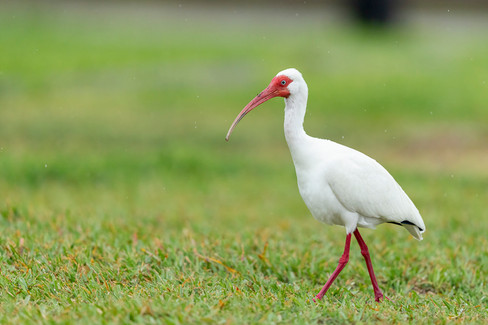






































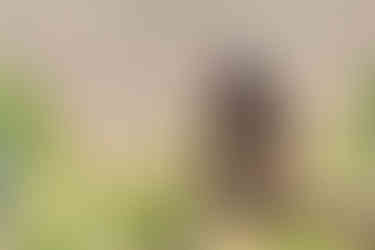


















































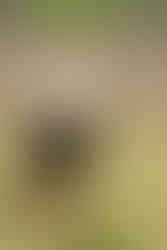







































































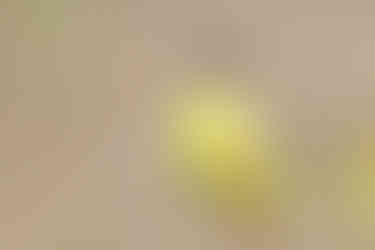



















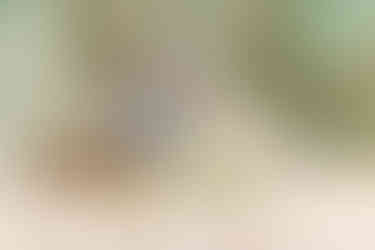






















Comments